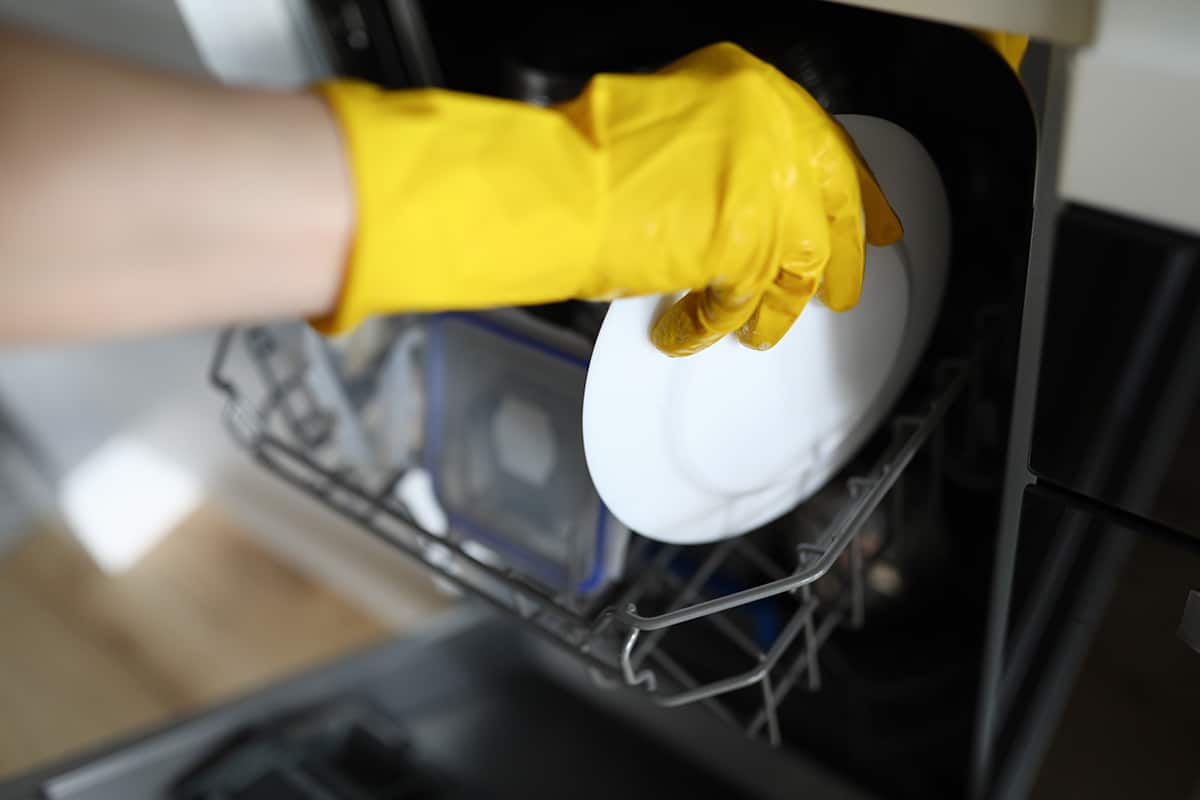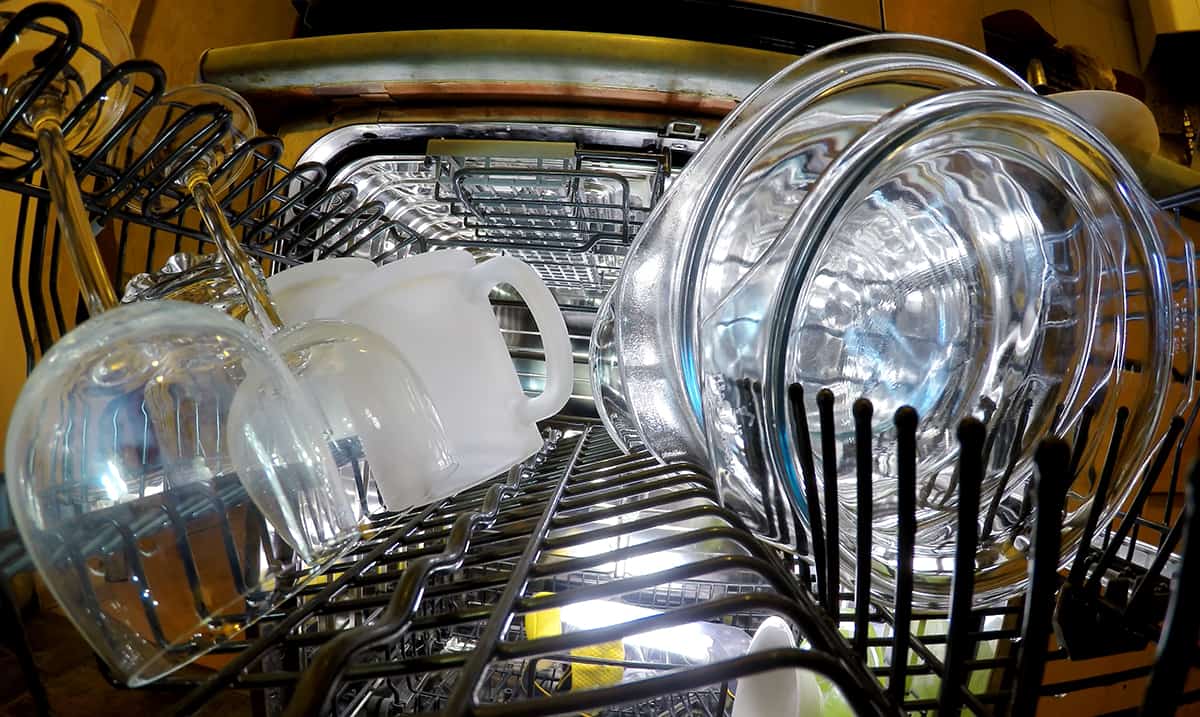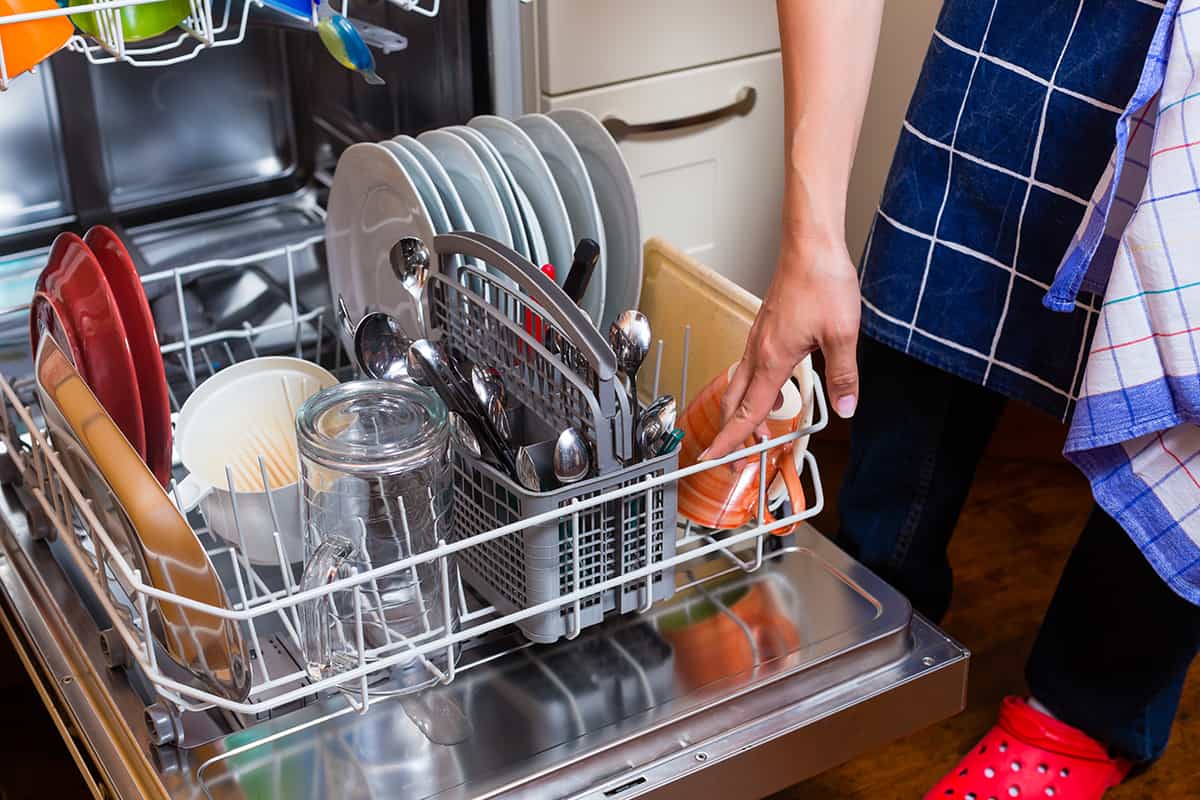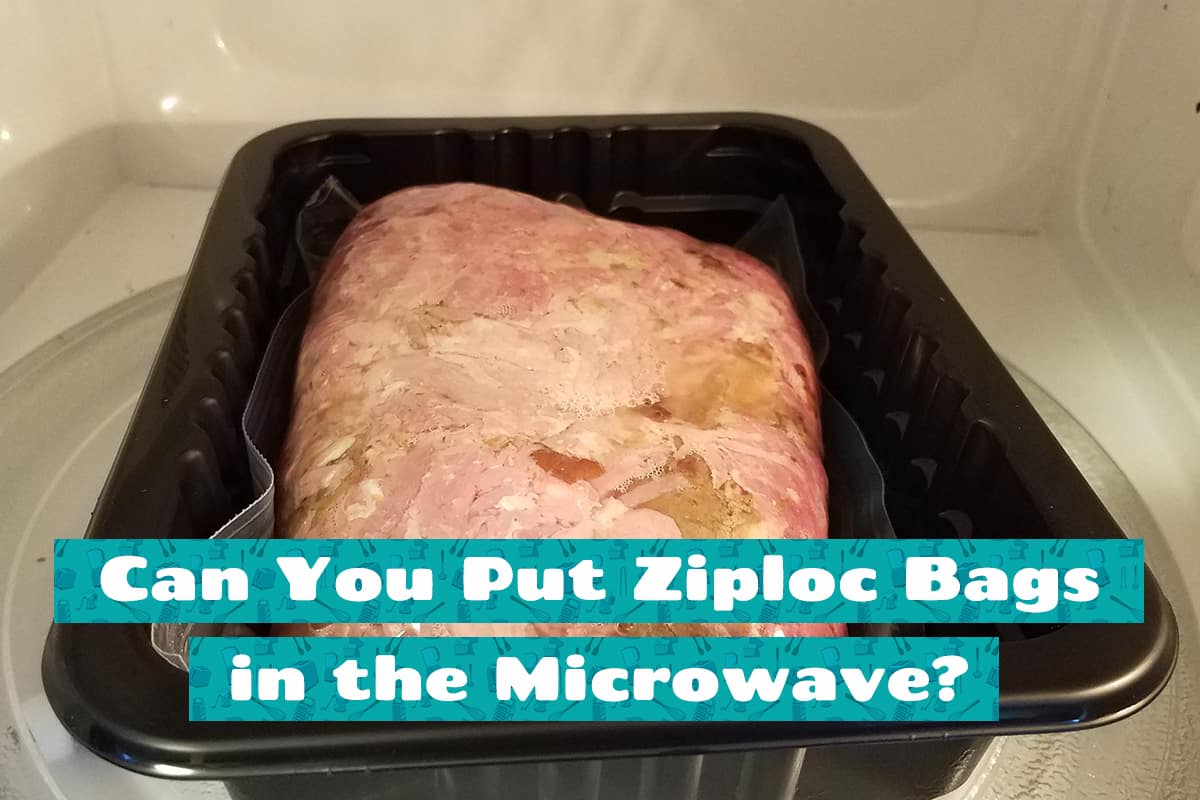As often as we use dishes, most of us probably don’t think twice about what dishes belong in the dishwasher and what can go into the microwave. Luckily, there are labels on certain dishes that tell us exactly what we can do with them. However, if something is dishwasher-safe, does that automatically make it microwave-safe?
Coincidentally, many dishes that are dishwasher-safe are, indeed, microwave-safe, and vice versa. However, these features have nothing to do with each other. It’s possible for a dishwasher-safe dish to cause harm when you put it in a microwave.
In this guide, we’re going to dig into the meanings of dishwasher-safe and microwave-safe, how to tell whether something is microwave-safe, and what can happen when you microwave a non-microwave-safe object.
What Does Dishwasher-Safe Mean?

Essentially, “dishwasher-safe” relates to how well a dish can withstand the changing temperatures inside a dishwasher. You may notice how your ceramic plates, plastic bowls, and metallic cookware all come out of the dishwasher spick and span. This is because, in essence, a dishwasher’s heat and pressure is unable to damage these products in any way.
If a product is labeled as dishwasher-safe, it means that it has been tested to withstand the heat, pressure, and detergents used in a typical dishwasher cycle without losing its shape, color, or function.
The following materials are generally considered to be dishwasher-safe:
- Glass
- Ceramic
- Stainless steel
- Plastic (BPA-free)
- Melamine
- Silicone
- Aluminum (anodized)
- Porcelain
- Cast iron (with enamel coating)
- Some types of wood (such as bamboo or teak)
What Does Microwave-Safe Mean?

“Microwave-safe” is a term used to indicate that a product can be safely used in a microwave without damaging the product or causing harm to the user. If a product is labeled as microwave-safe, it means that it has been tested to withstand the heat and energy waves produced by a microwave without melting, warping, or releasing harmful chemicals.
When you use a microwave-safe product in the microwave, it can heat up quickly and evenly, making it a convenient and efficient way to prepare food. However, not all products are microwave-safe, and using them in a microwave can be dangerous.
I’ll list some common materials that you can safely put inside a microwave:
- Glass
- Ceramic
- Paper (specifically labeled as microwave-safe)
- Plastic (BPA-free and labeled as microwave-safe)
- Silicone (labeled as microwave-safe)
- Wax paper
- Some types of cardboard (such as paper plates or takeout containers)
Is Dishwasher-Safe Microwave-Safe?
If you take a look at the list of both dishwasher-safe and microwave-safe materials above, you’ll find a bit of overlap between them, specifically concerning glass, ceramic, and silicone. But what you will also notice is that the vast majority of materials in one list is not found on the other.
While glass and ceramic are both dishwasher-safe and microwave-safe, there’s no correlation between them. Glass and ceramic happen to withstand the changing temperatures and pressure inside a dishwasher while also being resistant to the microwaves from a common microwave oven.
How to Tell Whether Something Is Microwave-Safe
The simplest way to determine whether something is microwave-safe is to look for a label. The label looks like a microwave with curvy lines denoting microwave radiation. Some microwave-safe labels have curvy lines hovering over a plate.
But what if you lost the package, and what if there isn’t a microwave-safe label stamped or imprinted onto the dish? Well, there is at least one thing you can try.
Place the dish inside your microwave along with water inside a microwave-safe vessel and microwave them for 15 seconds. If the water becomes hot but the dish in question remains cool, then it’s most likely microwave-safe.
Please note that the following materials are unquestionably not microwave safe and that you should not attempt a microwave test to gauge their microwave-safe properties:
- Metals (including aluminum foil)
- Styrofoam or polystyrene foam
- Most types of plastic
- Paper bags or recycled products
- Non-tempered glassware
- Containers with plastic lids
- Ceramics with metallic accents or glazes
- Any object with metallic paint or ink
How to Tell Whether Something Is Dishwasher-Safe

There are several methods one can use to ascertain whether or not an item is safe for the dishwasher. In most cases, you can tell if an item can go in the dishwasher by looking at the label or packaging. Dishwasher safe denotes that the product has been evaluated and found to be safe for use in a dishwasher.
Whether or not a product is dishwasher-safe can usually be ascertained in a few other ways if there is no label or instructions included. The square symbol depicting plates and water droplets indicates that the item is dishwasher safe. This symbol indicates that the product has been validated for safe use in a dishwasher.
The instructions or website of the product’s manufacturer can also be consulted to learn if the item is dishwasher-safe. Most products can be safely cleaned in the dishwasher, but check with the manufacturer first.
Microwaving a Non-Microwave-Safe Dish—What Can Happen?
There are tons of videos on YouTube that demonstrate what can happen when you try to microwave a non-microwave-safe object (you can find some of the more popular ones here and here).
But in general, here are some of the things that can happen if you attempt to microwave non-microwave-safe materials.
1. Melting/warping
Certain materials, such as plastics or some types of ceramics, may melt or warp when exposed to the heat of the microwave. This can lead to permanent damage to the dish and make it unusable.
2. Fire
Some materials, such as paper or Styrofoam, can catch fire when exposed to high temperatures in the microwave. This can cause a dangerous fire that can spread quickly.
3. Release harmful chemicals
Certain materials, such as plastics or foam, may release harmful chemicals into the food when heated in the microwave. This can be harmful to the person consuming the food, as well as to the microwave itself.
4. Damage to microwave
Microwaving non-microwave-safe dishes can damage the microwave itself, causing it to malfunction or even catch fire. This can be expensive to repair or replace.






